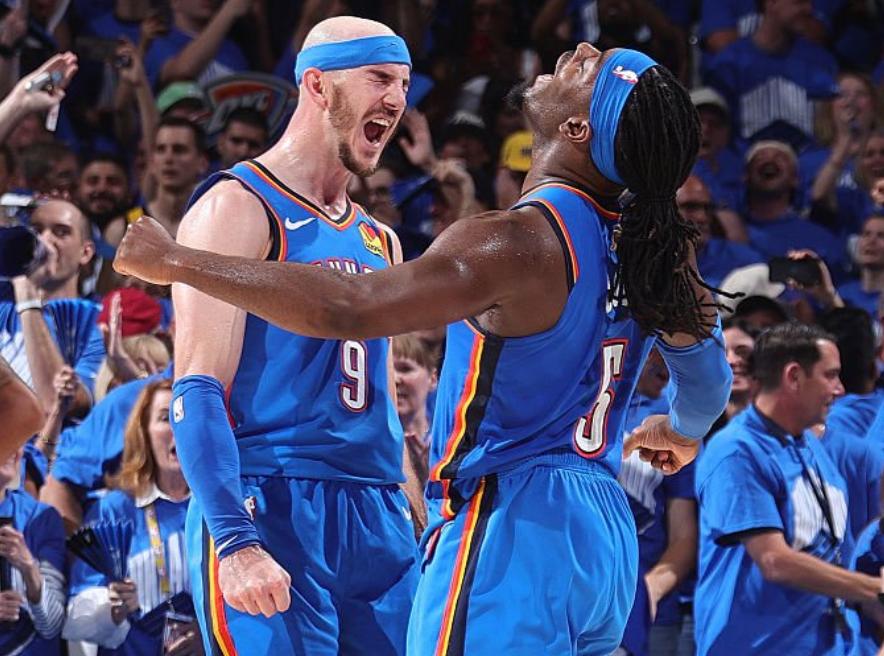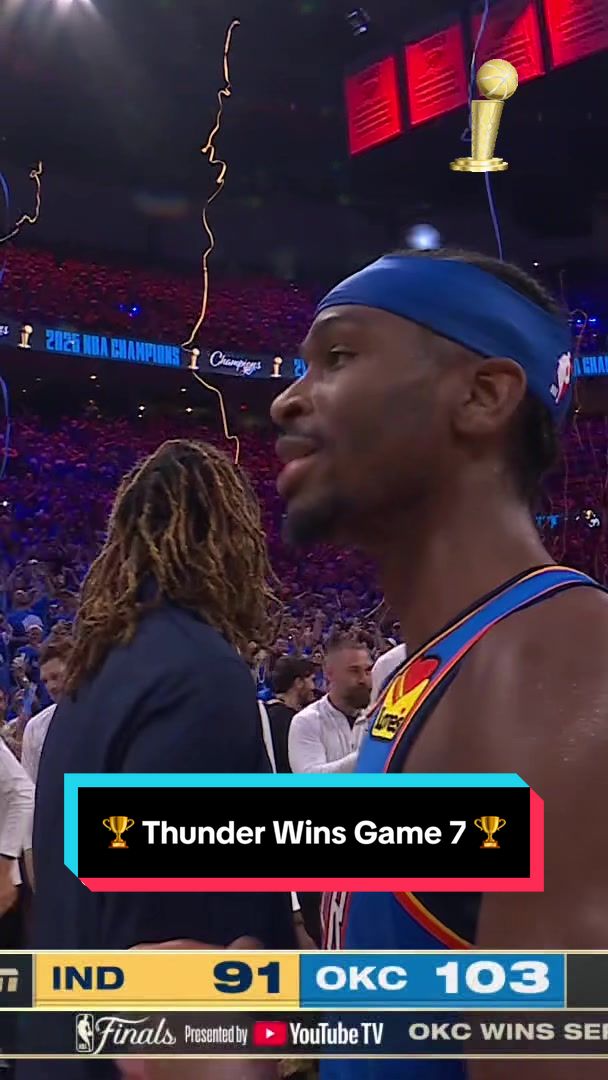Was the Thunder's championship truly won through free throws?
The Thunder defeated the Pacers 4-3, with Alexander unanimously named Finals MVP, leading the team to its first title in Oklahoma City. However, skepticism remains, with some believing that the Thunder relied on free throws to secure the championship. The question is, did the Thunder really win this title through free throws? Let's analyze this controversy from a data perspective.

Misconception 1: The Thunder's significant advantage in free throws
Firstly, the Thunder are not the free throw heavyweights that people might think. During the regular season, the Thunder averaged 20.4 free throws per game, ranking 26th in the league. In the playoffs, they averaged 26 free throws per game, placing 4th among the 16 teams, lower than the Rockets, Cavaliers, and Pistons, but only 1.3 free throw attempts more than the 6th-ranked Pacers.
In the seven games of the Finals, the Thunder averaged 30.6 free throw attempts, while the Pacers averaged 26.6, resulting in a 4 free throw difference between the two teams. Is a 4 free throw advantage enough to favor the Thunder? Probably not, as it relates to the playing styles of both teams. During the Finals, the Thunder averaged 54.5 drives per game, compared to the Pacers' 47.5. More drives naturally lead to more fouls and free throw opportunities.

Data shows that the Pacers averaged 7.5 free throw opportunities from drives, while the Thunder had 11.7, with the difference essentially accounting for the overall free throw disparity between the two teams.
Some fans might argue that the Pacers scored 36 fewer points from free throws in the Finals, but this is also related to their lower free throw percentage. The Thunder had a free throw percentage of 82.2%, while the Pacers were at 75.8%. The total number of free throw attempts over the seven games only differed by 28. As mentioned earlier, on average, there was only a difference of 4 free throw opportunities per game.
Misconception 2: Alexander relies solely on free throws
The label of "free throw merchant" has been attached to Alexander, with some fans believing he only scores through free throws. This is certainly not the case. During the regular season, Alexander averaged 7.9 free throws made per game, ranking first in the league, but part of this is due to his impressive 89.8% free throw percentage. In reality, his average free throw attempts ranked third, behind Giannis and Embiid.

If we exclude free throw points and consider only points scored in the flow of play (24.8 points), Alexander would still rank first in the league, surpassing Jokic (24.4 points) and Giannis (23.9 points).
Of course, Alexander, with his diverse offensive skills, is indeed adept at drawing fouls. However, this doesn't mean the league favors him; rather, it showcases a unique talent.

"Historically, I believe our definition of 'elite athletes' has been quite narrow," said Reidoff, president of P3, a sports science lab with long-standing ties to the NBA. "Players like Giannis, Edwards, and Zion always stand out. They rely on incredible acceleration and explosive take-off ability, which makes their highlight moments ever-present. In many ways, they are the easiest to spot. In contrast, players like Alexander, Harden, and Doncic—these highly skilled and efficient athletes—have their own set of tools they prefer to utilize. The best always find ways to leverage their strongest tools against your weakest spots, and I believe Alexander falls into that category."
Over the past decade, P3 has assessed over 1,000 NBA players but has never tested Alexander. However, just from visual observation, in terms of physique, Alexander possesses exceptional agility and deceleration strength—players in P3's database with similar ankle flexibility and braking ability usually stand around 1.83 meters, while Alexander is 1.98 meters tall.
"To some extent, everyone creates contact and step-backs, but Alexander is a master at this," Nash once remarked about the Thunder star.
Core: The Thunder's championship was truly based on defense
The key to the Thunder lifting the championship trophy in Oklahoma City lies in their unparalleled defensive advantage.
The Thunder established themselves as the best defensive team during the regular season with a significant margin. They allowed 2.5 fewer points per 100 possessions than the second-ranked Magic, which is the second-largest point differential between the top two defensive teams in the 29 seasons for which we have game-by-game data.
In the playoffs, the Thunder limited the Grizzlies (first-round opponent) and the Nuggets (second-round opponent) to 19.6 and 15.0 fewer points per 100 possessions, respectively, compared to their regular season averages. In the 29 years of available game-by-game data (870 cases), these are the 2nd and 13th largest point differentials in any playoff series.

The team's defense benefitted from an excellent combination of forcing turnovers and rim protection—
During the regular season, the Thunder averaged 10.2 steals per 100 possessions, the highest mark among all teams in the past 12 seasons. In the playoffs, they averaged 10.7 steals per 100 possessions, the highest among all teams that advanced past the first round in the past 26 years. They recorded a total of 247 steals in the playoffs, the most in the 52 years for which steals have been recorded, surpassing the second-place team by 41 steals.
The Pacers scored 108.1 points per 100 possessions in the Finals, 9.6 points fewer than in the first three rounds. The Thunder secured the championship with one of their best defensive performances—during Game 7, they held the Pacers to just 91 points over 92 possessions, marking the second time the Pacers scored less than 1 point per possession in the playoffs.
Therefore, free throws were not the theme of this championship journey; defense winning the championship is the true essence of the Thunder's first title in Oklahoma City.


Wonderfulshortvideo

“Impressive team, impressive player.” SGA has high praise for Tyrese Haliburton + the Pacers ✊



See you next season, Champ! 👋🏆



SGA all smiles on the biggest night of the year 🙌🏆



THE OKC THUNDER WIN GAME 7 TO BECOME 2024-25 NBA CHAMPIONS‼️🏆



And that’s how it’s done 🤝🙂↕️



Shai Gilgeous-Alexander is the fourth player in



J Dub or Coach Herman Boone? 😭🤣 OKC is on a tight schedule for








 Links
Links
 Contact
Contact
 App
App


